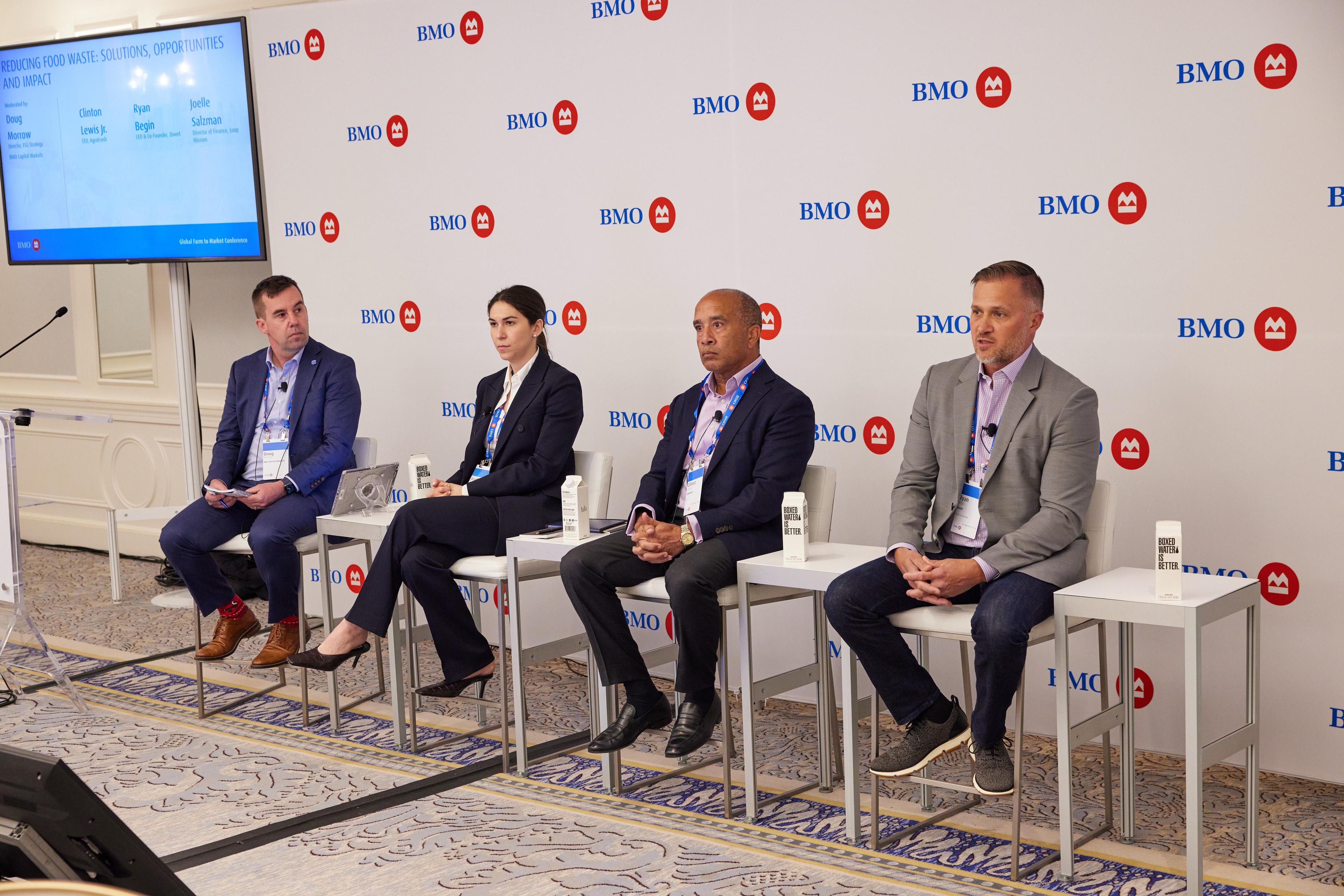If you want to get a sense of the scope of food waste, just look at the numbers. According to the Food and Drug Administration, food waste accounts for as much as 40% of the U.S. food supply.1 It’s also the largest category of materials placed in landfills, accounting for nearly a quarter of municipal solid waste. Food waste occurs at every stage of food production and distribution, from farmers to packers, from manufacturers to shippers, and from retailers to consumers. That means as much as 160 billion pounds of food goes uneaten each year in the U.S. alone, food that could be put to use in underserved communities.2
The sheer magnitude of this issue can seem overwhelming. Fortunately, a growing roster of companies are rising to meet that challenge through innovative solutions. At the 18th annual BMO Capital Markets Farm to Market Conference in New York, Doug Morrow led a panel to discuss why food waste persists and how to address the issue and featured Ryan Begin, CEO & Founder of Divert, a Concord, Massachusetts-based company that provides technology and infrastructure to maximize food freshness, recover edible food to distribute to communities, and convert food waste into renewable energy; Clinton Lewis Jr., CEO of AgroFresh, a Philadelphia-based agtech company that helps farmers, packers and retailers extend the shelf life of fresh produce, and Joelle Salzman, Director of Finance, at LOOP Mission, a Montreal-based company that promotes a circular economy by repurposing rejected fruits and vegetables into cold-pressed juices.
Everything, Everywhere, All the Time
Roughly 40% to 50% of root crops, fruits and vegetables perish before they even reach consumers.3 But consumer behavior is also a key factor. Most produce is both seasonal and regional, but shoppers in the U.S. can find several varieties of apples year-round at their grocery stores. That, in itself, is a problem, the panel said.
“As long as people want every type of fruit and vegetable on shelves all year long, there will continue to be food waste,” Salzman said. “The further we have to source our fruits and vegetables, the more likely it is that there is waste in transit. And from the grocery store perspective, there's more SKUs that they need to keep a buffer on, which also creates more waste.”
Even the way food looks often leads to food waste. Consumers often decline to purchase imperfect-looking yet perfectly fresh produce. “Food waste is very much a human-driven event,” Begin said.
Innovation will play a significant role in combating the human element. AgroFresh, for example, offers plant-based coatings to extend the shelf life and improve the appearance of fresh fruit. Going forward, the challenge will be making sure innovations are applied through the food supply chain.
“The incentives are not always aligned,” Lewis explained. “There are retailers that are fine with some degree of food waste. You bring bananas home; they waste, and you’re going to come back to the store. While many of us are working to address that, there are some incentives where the marketplace is still fragmented. But where you have a supply chain that's much more vertically integrated, where you have an end-to-end view of the supply chain, someone there is thinking about the enterprise-wide benefit and the financial loss of shrink and food loss. They’re also thinking about the mission they have around their own environmental footprints, what they're doing around sustainability, and you're hearing clear initiatives where they’re really interested in doing something about it.”
Time for Action
Food waste has been an ongoing challenge, but there’s now a sense of urgency in finding solutions.
“We have about 17 years left of landfill capacity in the United States, which means we [either] need to build more landfills, or we need to do something more intelligent,” Begin said. In collaboration with CVS Health, Divert built a food donation platform that converts food waste from CVS’ retail locations into either food donations to under-resourced communities or renewable energy.
Customer demand may be the ultimate driver. More and more companies are looking to partner with organizations that can help them meet their environmental, social and governance, or ESG, goals. Meanwhile, consumers are growing more sophisticated and are demanding that brands demonstrate sustainability practices. Against that backdrop, eliminating food waste and other sustainability considerations are becoming essential to brand strategies.
“We know that millennials and Gen Z-ers are actively looking for brands that are cause-driven and are willing to pay 10% more for these products,” Salzman said. “What we've seen over the last year is a shift in the behaviors of our direct customers—the retailers. For the first time, we see that retailers want to put brands on their shelves that will help them achieve their own sustainability goals. We feel that the doors are opening faster for us, and we're getting meetings with retailers sooner than we thought because we are so mission-driven.”
1 U.S. Food & Drug Administration
2 Environmental Defense Fund
3 Food and Agriculture Organization of the United States
